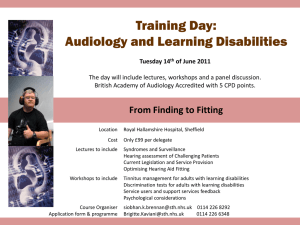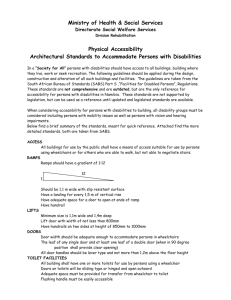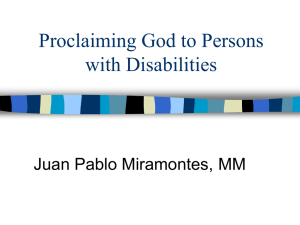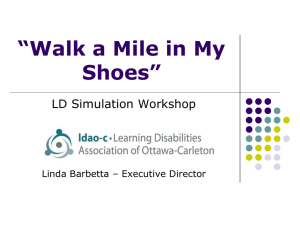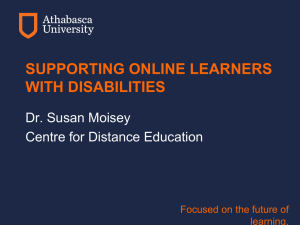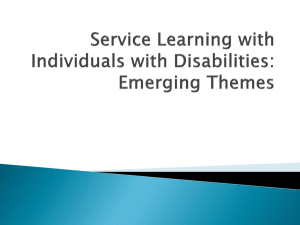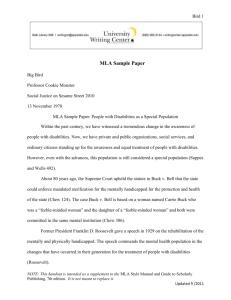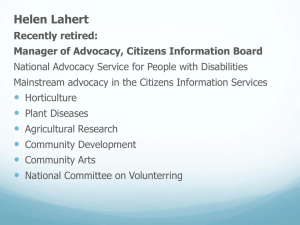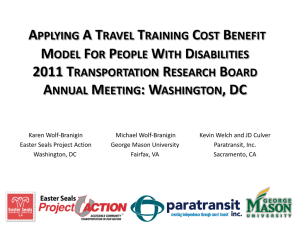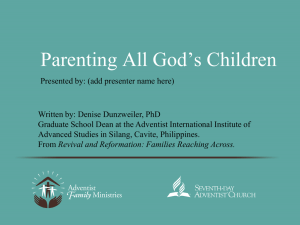People First Language
advertisement
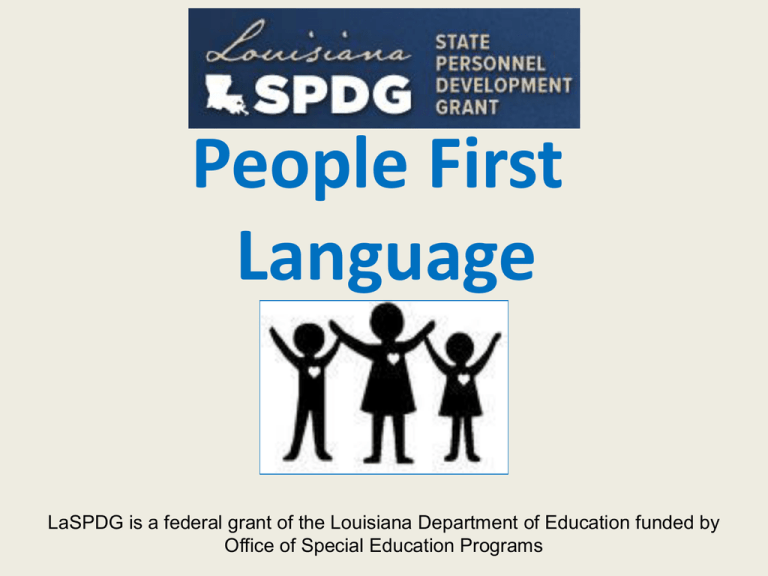
People First Language LaSPDG is a federal grant of the Louisiana Department of Education funded by Office of Special Education Programs Sticks & Stones Think back to a time when someone hurt you with verbal sticks and stones. Choose a word/phrase to describe how that impacted you. Sticks & Stones Sticks and stones may break the bones, but words CAN and DO HURT! Goal: To develop awareness and sensitivity to words that refer to individuals and their disabilities. Objectives: • • • To understand the importance of the words chosen when referring to individuals with disabilities To become aware of statements that represent People First Language To apply People First Language to non-examples People First Language “People First Language puts the person before the disability and describes what a person has, not who a person is.” “Old and inaccurate descriptors perpetuate negative stereotypes and generate an incredibly powerful attitudinal barrier – the greatest obstacle facing individuals with disabilities.” “People First Language reflects good manners, not ‘political correctness’ and it was started by individuals who said ‘We are not our disabilities’.” Kathie Snow. (n.d.) A few words about People First Language. Disability is Natural. Retrieved August 1, 2012 from http://www.disabilityisnatural.com/images/PDF/pflsh09.pdf People First Language I WILL SAY: INSTEAD OF: People with disabilities. Handicapped/disabled Cognitive or intellectual disability Mental retardation Mike has autism Mike is autistic Accessible parking Handicapped parking “Language tends to shape beliefs about a person’s potential needs and desires “ [Hutchinson and McGill, 1992]. The language we use influences the way we see people and the way they see themselves. Video of People First Language http://www.youtube.com/watch?v=QQ0pKPxoyHs This is part of a social marketing campaign to raise awareness of the importance of utilizing people-first language when referring to people who have developmental or intellectual disabilities Jill Egle is an author, international speaker, and selfadvocate for individuals with intellectual disabilities. https://vimeo.com/43469334 “Say This, Not That” • Small groups of 2-4 people or individually • Read the statement and identify the problem • Using People First Language, generate a better way to say the statement • Be prepared to share with the whole group “I am the inclusion teacher and will have the students with disabilities in my class this year.” “I am the inclusion teacher and will have the sped kids in my class this year.” “Molly is a first grade student in my class; she has a diagnosis of autism.” “Molly is a first grade student in my class; she is autistic.” “Bryant receives special education services and will be a part of the basketball team this year.” “Bryant is in special ed. and will be a part of the basketball team this year.” “Clay will utilize a wheelchair this year.” “Clay is confined to a wheelchair this year.” “The school has made additional spaces for accessible parking.” “The school has made additional spaces for handicapped parking.” “Mrs. Jones will be teaching students without disabilities rather than students receiving special education services.” “Mrs. Jones will be teaching normal students rather than students receiving special education services.” “John communicates with his eyes/devices/etc.” “John is non-verbal.” “Bill is a student who takes the LAA1 test.” “Bill is a LAA1 student.” THANK YOU!!!! For the People First Language powerpoint and other resources, visit our website www.laspdg.org and click on the Family Engagement tab. The contents of this activity were developed under a grant from the U.S. Department of Education, #H323A110003. However, those contents do not necessarily represent the policy of the U.S. Department of Education, and you should not assume endorsement by the Federal Government.


